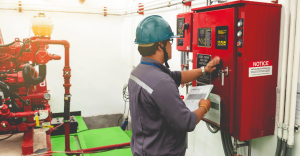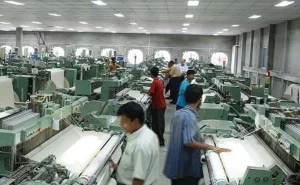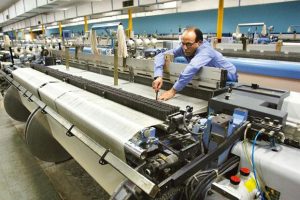Inspect how conversion kits for emergency lighting in Indian textile mills advance worker safety which has been indeed for several decades. Its drawbacks are becoming increasingly apparent. Higher energy consumption, heat emission, maintenance costs, and environmental impact are just a few of the challenges. Additionally, safety concerns have been raised due to inadequate lighting, which has resulted in real incidents where workers have suffered physical injuries. 
In a recent incident in a textile mill in southern India, several workers were injured when traditional lighting fixtures overheated and burst, sending shards of glass flying. The excessive heat buildup not only caused the bulbs to burst but also resulted in burns and cuts to the workers nearby. This unfortunate event highlights the pressing need for safer and more reliable lighting solutions in Indian textile mills to prevent such accidents and protect the well-being of workers.
In many Indian textile mills, they still use old-fashioned lights like incandescent bulbs. But these lights are causing problems for the workers. They don’t give enough light, so people strain their eyes and get tired quickly, especially because they work long hours doing detailed tasks. 
Also, these lights make the place hotter, which is already tough because the mill needs to stay at the right temperature for the materials and the workers. Plus, these old lights can’t be adjusted, so you can’t change them to fit different jobs or areas in the mill. Because of all this, using these old lights isn’t good for the workers’ health or for getting the work done right. That’s why people are starting to realize they need to switch to new, better lights that save energy and make the mill safer and more comfortable for everyone.
Upgrading to modern emergency lighting systems in Indian textile mills is crucial for ensuring the safety, efficiency, and well-being of workers and operations. These systems provide reliable illumination during power outages or emergencies, minimizing downtime, enhancing emergency response capabilities, and boosting employee confidence. With energy efficient LED technology and advanced features like automatic testing, modern emergency lighting solutions offer a dependable and compliant safety measure that is essential for maintaining seamless operations in textile mills.
Here are five key reasons why upgrading to modern emergency lighting is essential for Indian textile mills:
Emergency lighting systems play a crucial role in enhancing safety within Indian textile mills by providing consistent illumination, especially during power failures or emergencies. This ensures that workers can navigate through potentially hazardous areas safely, significantly reducing the risk of accidents such as slips, trips, and falls. The improved visibility offered by these systems promotes a safer working environment for all employees, mitigating potential injuries and enhancing overall workplace safety standards.
Upgrading to modern emergency lighting systems ensures compliance with safety regulations, avoiding penalties and legal issues while prioritizing worker safety. This proactive approach safeguards employees’ well-being, enhances workplace reputation, and boosts morale and productivity. Additionally, modern emergency lighting systems offer long-term cost savings through energy efficiency and reduced maintenance requirements, contributing to the financial sustainability of textile mills.
In the event of a power outage or emergency situation, having reliable emergency lighting allows operations to continue without significant disruption. This minimizes downtime and prevents costly delays in production, ensuring that deadlines are met and customer commitments are fulfilled promptly. Moreover, by maintaining uninterrupted workflow during such events, textile mills can uphold their reputation for reliability and customer satisfaction, contributing to long-term success and competitiveness in the industry.
Clear and well-lit pathways provided by modern emergency lighting facilitate faster and more effective emergency response efforts. Whether it’s evacuating the premises or addressing a safety incident, having proper illumination enables workers and emergency responders to act swiftly and decisively, potentially saving lives and mitigating damages.
Investing in modern emergency lighting demonstrates a commitment to employee well-being, which can boost morale and confidence among the workforce. Knowing that their workplace is equipped with reliable safety measures can instill a sense of security and trust, leading to increased job satisfaction and productivity among employees.
Future Regulatory Developments in Indian Textile Mills are addressing safety concerns associated with prolonged working hours, a common occurrence in the textile industry. As regulations increasingly restrict the duration of shifts to safeguard worker health, attention is turning to the work environment itself. Traditional lighting systems, often inadequate and inefficient, cause risks to worker well-being, especially during extended work periods. The implementation of new rules and regulations underscores the need for comprehensive safety measures within textile mills, including improvements in lighting systems to mitigate health hazards associated with prolonged exposure to inadequate lighting.
Replacing traditional lighting with modern Emergency Lighting emerges as a proactive and sustainable solution to address these safety concerns effectively. It just not only ensures adequate illumination during power outages or emergencies but also offers consistent and reliable lighting throughout regular operations.
By upgrading to Emergency Lighting systems, textile mills can significantly enhance workplace safety, particularly during extended shifts, by providing optimal lighting conditions that reduce eye strain, fatigue, and the risk of accidents. This proactive approach not only aligns with regulatory requirements but also demonstrates a commitment to prioritizing the health and well-being of employees, fostering a safer and more conducive work environment within Indian textile mills.
In summary, installing modern emergency lights in Indian textile mills is crucial for keeping workers safe and efficient. Recent accidents with old traditional lighting show why we need better lighting. Upgrading to modern emergency lights just makes emergencies easier to handle but also keeps work going smoothly, boosts morale, and helps mills follow safety rules. As rules get stricter, switching to these lights becomes even more important. It’s a smart move that protects workers and shows mills care about their safety.
Upgrading to modern emergency lighting is crucial for Indian textile mills because it enhances worker safety, ensures compliance with regulations, minimizes downtime during emergencies, improves emergency response capabilities, and boosts employee confidence and morale.
Traditional lighting systems in Indian textile mills have drawbacks including higher energy consumption, heat emission, maintenance costs, environmental impact, inadequate illumination leading to safety concerns, and inflexibility in adjusting to different tasks and areas within the mill.
Modern emergency lighting systems provide reliable illumination during power outages or emergencies, ensuring that workers can navigate through potentially hazardous areas safely. These systems also contribute to enhanced workplace safety standards, reduced risk of accidents, and improved emergency response efforts.
Upgrading to modern emergency lighting systems offers benefits such as enhanced safety, minimized downtime, improved emergency response, and increased employee confidence and morale. Additionally, modern emergency lighting systems provide long-term cost savings through energy efficiency and reduced maintenance requirements.
Indian textile mills can prepare for future regulatory developments related to workplace safety by proactively upgrading to modern emergency lighting systems. By investing in safer and more reliable lighting solutions, mills can align with evolving safety regulations, mitigate health hazards associated with inadequate lighting, and demonstrate their commitment to prioritizing the health and well-being of their workforce.
Not sure what you required for your lightining project ?
Get in touch with us for FREE consultation.